Books
Published Works By and About Women
"Reply...By a Baltimore Lady"
Writers on both sides of the divide took up the pen to voice their opinions, extol their heroes, and discredit their adversaries. Although American women had already begun to establish themselves as professional writers before the war, more women became involved in literary pursuits in order to participate in the war effort. Women writers created many pamphlets and other publications justifying a particular political stance or seeking to criticize supporters of the opposing side.
Anna Ella Carroll, a daughter of a governor of Maryland, was a well-known Union supporter who wrote at least four pamphlets and numerous letters to the press from July 1861 to May 1862. Her best-known work is Reply to the Speech of Hon. J. C. Breckinridge. She also published The War Powers of the General Government 1861, and The Relation of the National Government to the Revolted Citizens Defined. Carroll later served as an informant for President Lincoln about the war's western front, but was never acknowledged for her assistance in garnering support for the Union and in planning military strategies used by Union forces.
In 1862, a Zouave infantryman garrisoned in Baltimore, reportedly named Thomas Hollingsworth Morris, published a pamphlet entitled How They Act in Baltimore By A Volunteer Zouave. The pamphlet publicly admonished certain women in Baltimore society for their Confederate sympathies. While Morris included only first names, the women he addressed may very well have been real people. "Rebel" women in Baltimore were particularly well known for expressing their secessionist sentiments. They often waved or wore flags, and flaunted red and white ribbons or flowers in support of the Confederacy. One response to Morris's pamphlet included a poem entitled Reply to the Volunteer Zouave By a Baltimore Lady." The poem was attributed to Fannie A. Harwood or to a Miss N. Lemmon, names that could be pseudonyms of a male or a female author. In any case, the poem mocked and chastised Morris for both his depiction of, and criticisms made against, the women of Baltimore. The poem also demonstrates the possibilities for female authorship and women's involvement in the politics of the time.
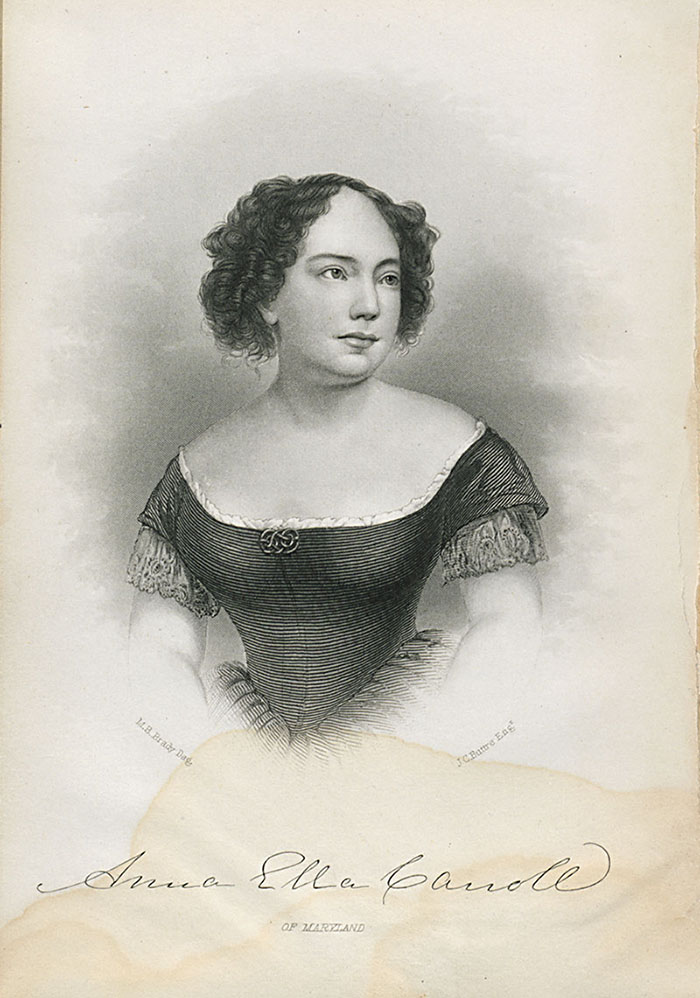
Anna Ella Carroll (1815-1894), born in Somerset County, Maryland.
Rare Books Collection, Special Collections, University of Maryland Libraries.
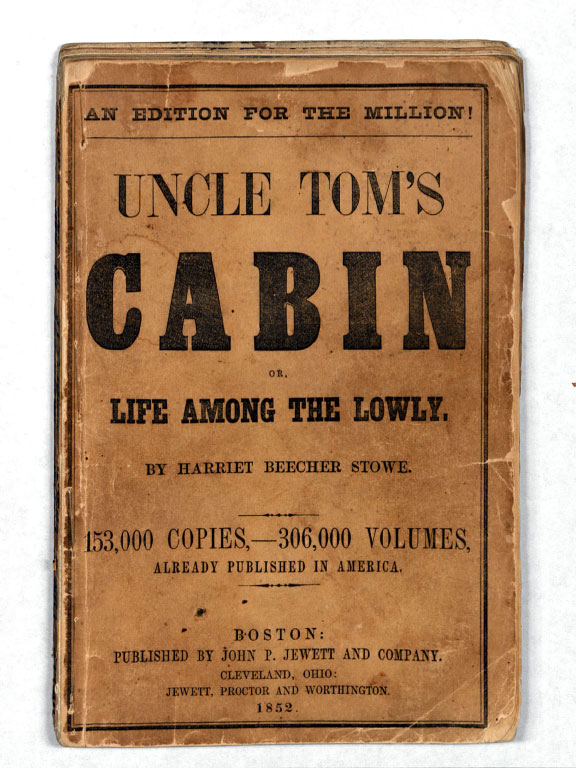
Uncle Tom's Cabin, 1852
Harriet Beecher Stowe's widely successful novel, Uncle Tom's Cabin, first published in 1852, demonstrated American women's full-scale entry into the worlds of publishing and political commentary. Stowe's book, the best-selling novel of the nineteenth century, supported the abolitionist cause and helped fuel tensions leading up to the war. Stowe based the main character on Josiah Henson, who was born into slavery in Charles County, Maryland.
Rare Books Collection, Special Collections, University of Maryland Libraries.

Cover of Harper's Weekly, September 7, 1861
Harper's Weekly was a source of war news and imagery for many Americans. The Baltimore woman depicted in this illustration rebelliously wears an early version of the Confederate flag.
Special Collections, University of Maryland Libraries.
Zoom in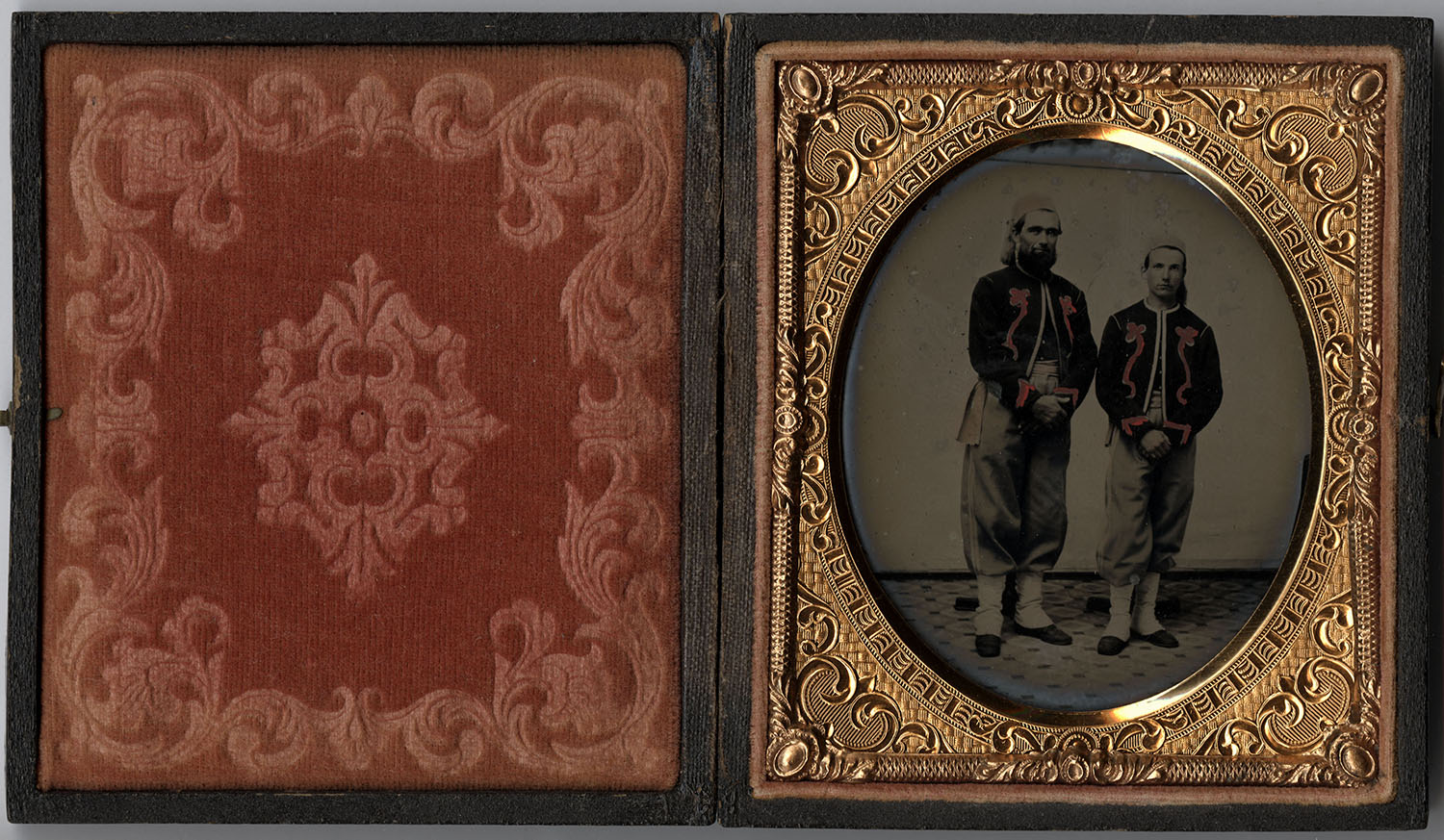
Zouave Soldiers Photograph, circa 1860s
These two Union soldiers, brothers Herman and Sandy Burhaus, pictured in this ambrotype, sport Zouave uniforms. American Zouave regiments adopted brightly-colored clothing inspired by the uniforms of the French military in North Africa. Their unique form of dress generally included an open-fronted jacket, baggy trousers tucked into the tops of the boots, and a sash. Zouave regiments served in the American military throughout most of the nineteenth century. Many Zouave units, considered to be elite soldiers, are featured prominently throughout Civil War history. Union women often showed their patriotism during the early years of the war by wearing Zouave-style jackets.
Burhaus Family Papers, Special Collections, University of Maryland Libraries.
Full details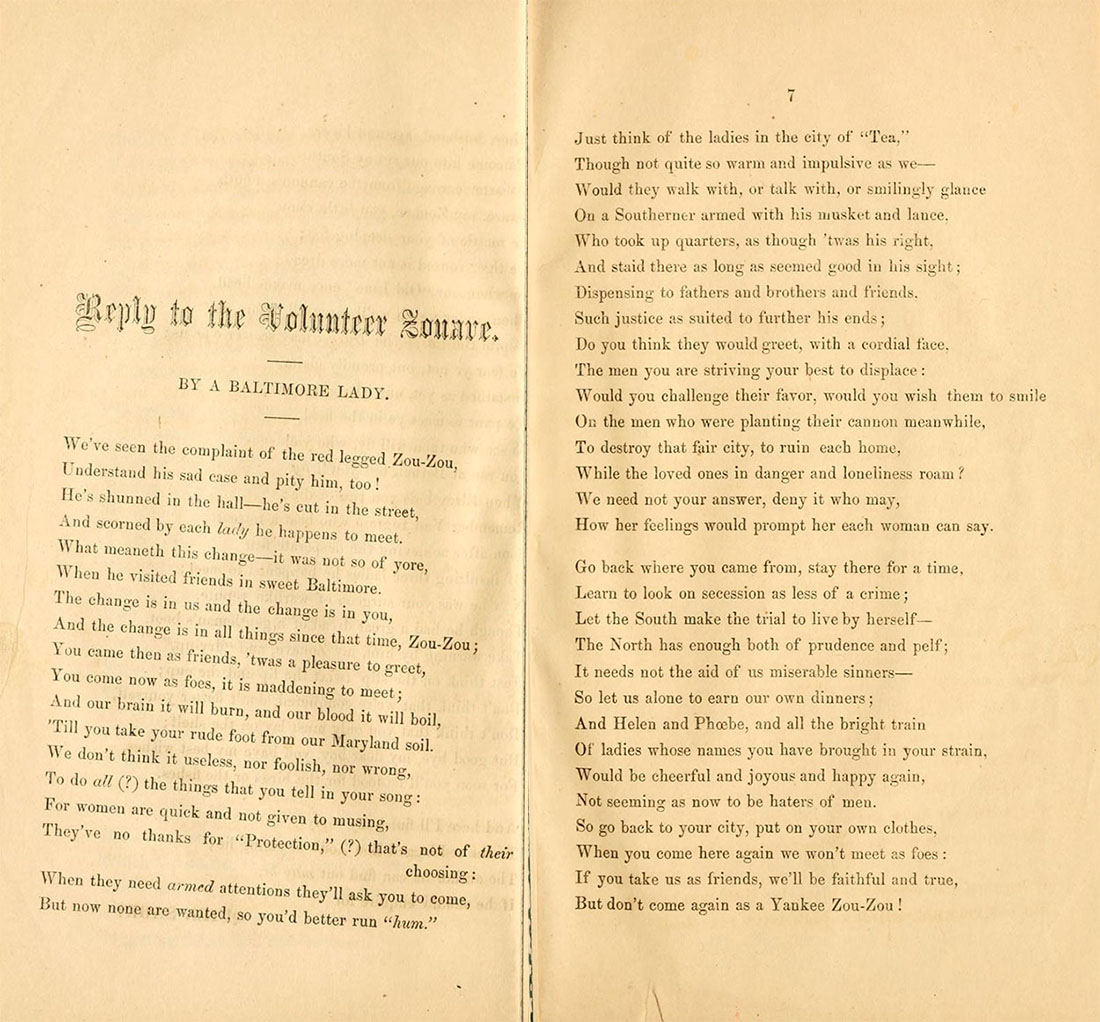
Pamphlet, 1862
The poem "Reply to the Volunteer Zouave by a Baltimore Lady," attributed to a Fannie Harwood or a Miss. N. Lemmon, appeared within the larger pamphlet, in ;A. D. 1862, or, The Volunteer Zouave in Baltimore.
Rare Books Collection, Special Collections, University of Maryland Libraries.
Full details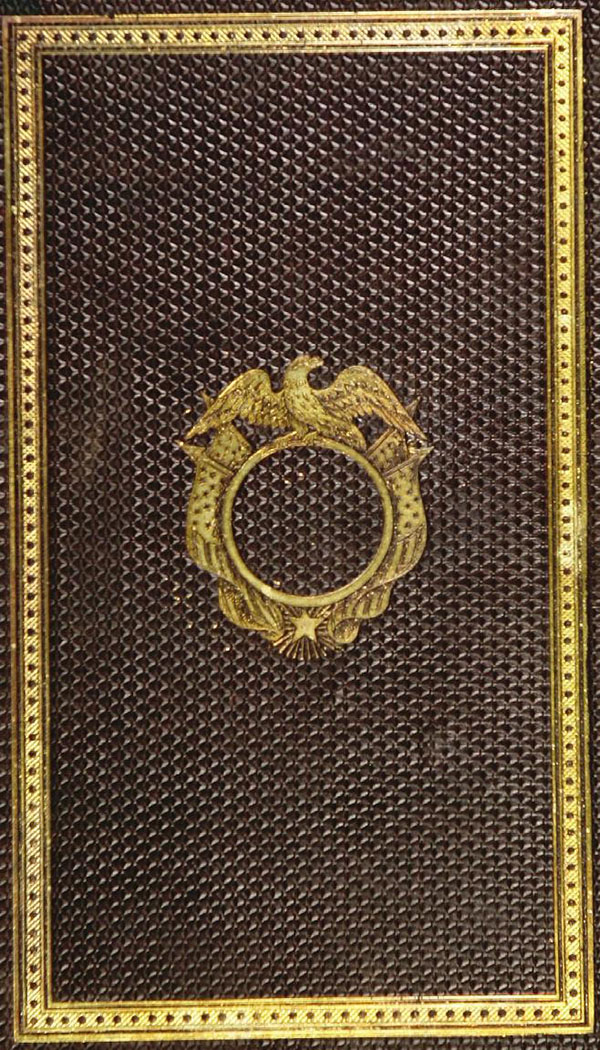
Book: Our Country, 1864
The U.S. Sanitary Commission and the U.S. Christian Commission published Our Country, in its Relations to the Past, Present, and Future: a National Book as a fundraising effort in 1864. Edited by Almira Hart Lincoln Phelps, a prominent Maryland educator of young women and founder of the Patapsco Female Institute, the book contains essays and poems by women writers concerning war, American history, and the desire for reuniting the country.
Rare Books Collection, Special Collections, University of Maryland Libraries.A physical copy of this book is available at the UM Libraries, but the button below links to a full digital copy in the Internet Archive held by Cornell Libraries.
Full details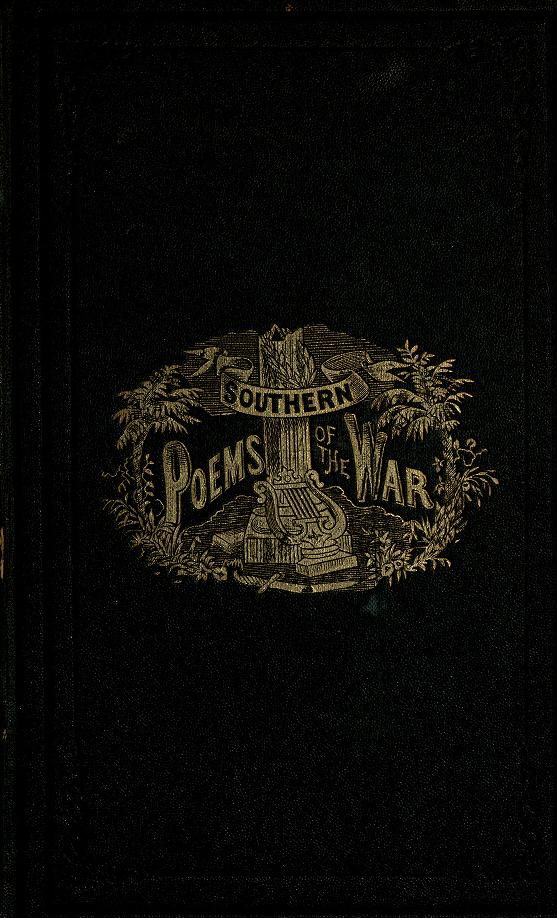
Book: Southern Poems of the War, 1867
In this 1867 volume Ms. Emily V. Mason of Virginia collected The Southern Poems of the War and dedicated them to "The Southern Soldiers, by one who admired their Heroism, Sympathized with their Successes, Mourned their Sufferings, and Shared their Privations." Many of the poems are by women writers, including the poem "Fiat Justitia" (Let justice be done), by a "Lady of Baltimore."
Rare Books Collection, Special Collections, University of Maryland Libraries. A physical copy of this book is available at the UM Libraries, but the button below links to a full digital copy in the Internet Archive held by University California Libraries.
Full details- Research Tips -
Published sources such as newspapers, books, or pamphlets can be considered primary sources if they were written contemporaneously with the subject under historical investigation. Older published sources, especially those with few copies still in existence, are usually considered to be "rare books," while unpublished, unique historical sources are called "manuscripts," if they are the papers of an individual, and "records" or "archives," if they are the documents of an institution or organization.
